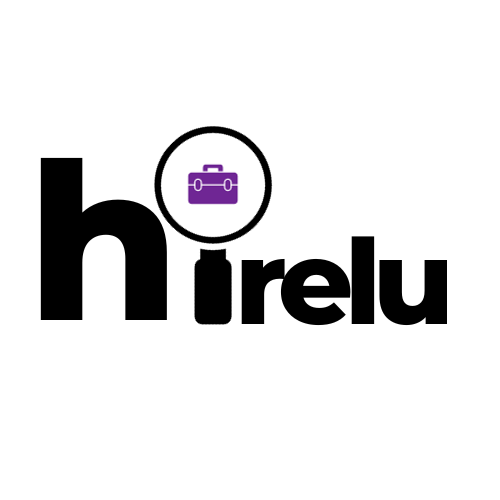In today’s competitive job market, having a well-crafted resume is essential for standing out from the crowd and landing your dream job. A resume serves as a snapshot of your skills, experience, and qualifications, and it is often the first impression that potential employers have of you. Therefore, it is crucial to invest time and effort into creating a resume that effectively showcases your strengths and makes you a standout candidate.
Key Takeaways
- A well-crafted resume is crucial for job seekers to stand out in a competitive job market.
- Resume writing services can provide valuable assistance in crafting a winning resume.
- Following a step-by-step guide and adhering to dos and don’ts can help job seekers write an effective resume.
- Different types of resumes should be used depending on the job and industry.
- Tailoring a resume to the job and making it stand out can increase the chances of getting hired.
The Importance of a Well-Crafted Resume
A well-crafted resume can make all the difference in getting noticed by potential employers. In a sea of applicants, a strong resume can help you stand out and increase your chances of landing an interview. It serves as a marketing tool that highlights your skills, experience, and qualifications, demonstrating why you are the best fit for the position.
A well-crafted resume also shows that you are serious about your job search and have taken the time to present yourself in the best possible light. It demonstrates your attention to detail, professionalism, and ability to effectively communicate your value to potential employers.
Resume Writing Services: What They Can Do for You
If you are unsure about how to create a winning resume or simply don’t have the time or expertise to do so, hiring a professional resume writing service can be a great option. These services specialize in crafting resumes that are tailored to your specific industry and job goals.
Resume writing services can help job seekers by providing expert advice on how to structure their resume, what information to include, and how to highlight their skills and achievements effectively. They can also provide valuable insights into current industry trends and best practices.
How to Write a Resume: A Step-by-Step Guide
| Section | Metrics |
|---|---|
| Introduction | Number of readers |
| Step 1: Choose the Right Resume Format | Percentage of readers who found this step helpful |
| Step 2: Include Contact Information | Percentage of readers who included all necessary contact information |
| Step 3: Write a Resume Summary or Objective | Percentage of readers who wrote a summary or objective |
| Step 4: List Your Work Experience | Percentage of readers who listed their work experience in reverse chronological order |
| Step 5: Include Your Education | Percentage of readers who included their education information |
| Step 6: Skills Section | Percentage of readers who included a skills section |
| Step 7: Customize Your Resume for Each Job | Percentage of readers who customized their resume for each job application |
| Conclusion | Number of readers who found the guide helpful |
Writing a resume can seem like a daunting task, but with the right guidance, it can be a straightforward process. Here is a step-by-step guide on how to write a winning resume:
1. Choose the right format: There are several different resume formats to choose from, including chronological, functional, and combination. The format you choose will depend on your specific circumstances and the industry you are applying to.
2. Include a strong summary statement: The summary statement is the first section of your resume and should provide a brief overview of your skills, experience, and qualifications. It should grab the reader’s attention and entice them to continue reading.
3. Highlight your achievements: Instead of simply listing your job responsibilities, focus on highlighting your achievements and the impact you made in previous roles. Use specific examples and quantify your accomplishments whenever possible.
4. Customize your resume: Tailor your resume to each job you apply for by carefully reading the job description and incorporating relevant keywords and skills into your resume. This will show potential employers that you have taken the time to understand their needs and are a good fit for the position.
5. Make it visually appealing: A visually appealing resume is more likely to catch the reader’s attention. Use a clean and professional design, choose an easy-to-read font, and use bullet points to organize information.
Resume Writing Tips: Dos and Don’ts
When writing a resume, there are certain dos and don’ts that can help you create a strong and effective document. Here are some tips to keep in mind:
Do:
– Use action verbs to describe your accomplishments and responsibilities.
– Quantify your achievements whenever possible.
– Keep it concise and focused, aiming for a one-page resume if possible.
– Proofread carefully for spelling and grammar errors.
– Include relevant keywords from the job description.
Don’t:
– Use cliches or generic phrases that don’t add value.
– Include irrelevant information or personal details.
– Use a generic template that doesn’t stand out.
– Rely solely on spell check; proofread manually as well.
– Lie or exaggerate your skills or experience.
The Different Types of Resumes and When to Use Them

There are several different types of resumes, and the one you choose will depend on your specific circumstances and the industry you are applying to. Here are the most common types of resumes:
1. Chronological resume: This is the most traditional type of resume and is organized by your work history in reverse chronological order. It is best suited for those with a consistent work history and a clear career progression.
2. Functional resume: A functional resume focuses on your skills and abilities rather than your work history. It is best suited for those who are changing careers, have gaps in their employment history, or have limited work experience.
3. Combination resume: As the name suggests, a combination resume combines elements of both the chronological and functional formats. It highlights both your skills and work history and is best suited for those with a diverse skill set or a mix of relevant experience.
The Key Components of a Winning Resume
A winning resume should include several key components that effectively showcase your skills, experience, and qualifications. Here are the essential elements to include:
1. Contact information: Include your name, phone number, email address, and LinkedIn profile (if applicable) at the top of your resume.
2. Summary statement: This is a brief overview of your skills, experience, and qualifications that grabs the reader’s attention and entices them to continue reading.
3. Work experience: List your previous jobs in reverse chronological order, including the company name, job title, dates of employment, and a brief description of your responsibilities and achievements.
4. Education: Include your educational background, including the name of the institution, degree earned, and dates attended.
5. Skills: Highlight your relevant skills and qualifications that are specific to the job you are applying for.
6. Achievements: Showcase your accomplishments and quantify them whenever possible to demonstrate the impact you made in previous roles.
The Importance of Tailoring Your Resume to the Job
Tailoring your resume to the job you are applying for is crucial for increasing your chances of getting noticed by potential employers. By customizing your resume to match the job requirements, you show that you have taken the time to understand the needs of the employer and are a good fit for the position.
To tailor your resume, carefully read the job description and identify the key skills, qualifications, and keywords that are mentioned. Incorporate these into your resume, highlighting how your experience and skills align with what the employer is looking for.
How to Make Your Resume Stand Out from the Crowd
In a competitive job market, it is important to make your resume stand out from the crowd. Here are some tips to help you make a memorable impression:
1. Use keywords: Incorporate relevant keywords from the job description into your resume to show that you have the skills and qualifications the employer is looking for.
2. Highlight achievements: Instead of simply listing your job responsibilities, focus on highlighting your achievements and the impact you made in previous roles. Use specific examples and quantify your accomplishments whenever possible.
3. Be creative: Find ways to make your resume visually appealing and unique. Use a clean and professional design, choose an easy-to-read font, and consider adding visual elements such as graphs or charts to showcase your achievements.
4. Include a cover letter: A well-written cover letter can complement your resume and provide additional context about your skills and experience. It also shows that you have taken the time to personalize your application.
Final Thoughts: Putting It All Together to Craft Your Winning Resume
Crafting a winning resume is a crucial step in the job search process. By following these tips and guidelines, you can create a resume that effectively showcases your skills, experience, and qualifications and increases your chances of landing an interview. Remember to tailor your resume to each job you apply for, highlight your achievements, and make it visually appealing. With a well-crafted resume, you can stand out from the crowd and land your dream job. So, take action today and start crafting your winning resume!
Looking for tips on how to write an effective resume? Check out our article on “Resume Writing Services” for expert advice and guidance. Whether you’re a recent graduate or a seasoned professional, crafting a compelling resume is essential in today’s competitive job market. Our article provides valuable insights and strategies to help you create a standout resume that will impress employers. Don’t miss out on this valuable resource – click here to read the full article.





